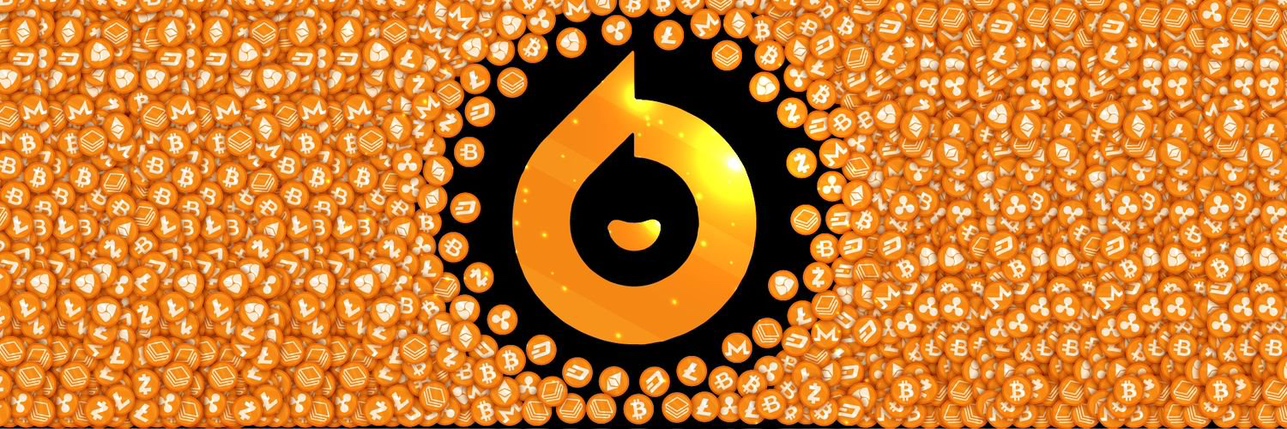
Ціна TrueUSDTUSD
Конвертація TUSD у UAH
Ціна TrueUSD у UAH сьогодні
Як ви думаєте, зросте чи впаде сьогодні ціна TrueUSD?
Ринкові дані про TrueUSD
Про TrueUSD (TUSD)
Про TrueUSD
TrueUSD (TUSD) – це перший стейблкоїн з привʼязкою до USD, який повністю регулюється державною фінансовою установою і прозоро перевіряється незалежними компаніями. Він був запущений у березні 2018 року з метою створення прозорого та безпечного стейблкоїну. З бумом криптовалютного ринку та притаманною йому нестабільністю різних цифрових валют зростала потреба у стабільному цифровому активі. TrueUSD був створений, щоб заповнити цю прогалину.
Компанія TrustToken, яка випускає TrueUSD, зареєстрована як компанія, що надає грошові послуги в рамках Мережі боротьби з фінансовими злочинами США. Її фонди регулюються Департаментом бізнесу та промисловості штату Невада, відділом фінансових установ. Крім того, забезпечення для TrueUSD перевіряється Cohen Company, а також Armanino, які є провідними світовими аудиторськими фірмами.
На відміну від криптовалют, таких як Bitcoin і Ethereum, вартість яких може різко коливатися, TrueUSD привʼязаний до вартості долара США. За кожним TrueUSD в обігу стоїть еквівалентна кількість доларів США, що зберігається на рахунках умовного депонування. Така привʼязка забезпечує стабільну вартість і сприяє зміцненню довіри між користувачами.
Оскільки TrueUSD повністю відповідає законодавству США, компанія дотримується всіх необхідних юридичних норм. Регулярні аудити, що проводяться сторонніми компаніями, гарантують цілісність монети, що робить її кращим вибором для користувачів, які надають перевагу прозорості та безпеці.
Стабільність TrueUSD приваблює різних користувачів, зокрема трейдерів, підприємства та фінансові установи. Він широко використовується як торгова пара на криптовалютних біржах, а також як спосіб оплати там, де традиційні банківські операції можуть бути повільними або дорогими.
Ресурси
Офіційний вебсайт: https://tusd.io/
Принцип роботи TrueUSD
TrueUSD використовує метод, відомий як токенізація, для представлення реальної валюти в блокчейні. Коли користувач купує TrueUSD за долари США, еквівалентна сума в доларах США зберігається в професійному фідуціарному банку-партнері. Потім токени TrueUSD карбуються і надсилаються користувачеві.
Обмін TrueUSD на долари США є простим процесом. Користувачі можуть надсилати свої TrueUSD до смартконтракту, а еквівалент у доларах США розблоковується з рахунку умовного депонування і надсилається на банківський рахунок користувача. Потім відповідний TrueUSD спалюється, що забезпечує привʼязку 1:1.
Робота TUSD регулюється смартконтрактами на блокчейні Ethereum. Ці автоматизовані контракти безпечно обробляють випуск і викуп токенів. Весь процес прозорий і може бути перевірений у будь-який час, що додає ще один рівень довіри.
TUSD виконує різні функції у фінансовій екосистемі. Стабільність робить його хорошим вибором для хеджування від волатильності інших активів. Крім того, він відіграє вирішальну роль на платформах децентралізованих фінансів (DeFi), пропонуючи стабільне середовище для різних фінансових послуг.
Попри свій успіх, TrueUSD не позбавлений викликів. Опора на традиційні банківські послуги та дотримання нормативних вимог іноді може сповільнювати процеси. Критики також стверджують, що централізація в управлінні рахунками умовного депонування суперечить децентралізованій природі криптовалют.
Висновок
TrueUSD зайняв свою нішу у волатильному світі криптовалют, пропонуючи стабільний і прозорий цифровий актив. Його відповідність нормативним вимогам, а також можливість підтримувати привʼязку до долара США у співвідношенні 1:1, призвели до широкого впровадження та довіри до стрейблкоїна. Смартконтракти, токенізація та процеси викупу підкреслюють надійний механізм, який використовує переваги блокчейну, одночасно зменшуючи його ризики. Оскільки ландшафт цифрових фінансів продовжує розвиватися, роль стейблкоїнів, таких як TrueUSD, може стати ще більш значущою, потенційно формуючи майбутнє як традиційної, так і цифрової економіки.
Аналітичний ШІ-звіт про TrueUSD
Історія ціни TrueUSD (UAH)
 Найнижча ціна
Найнижча ціна Найвища ціна
Найвища ціна 
Яка найвища ціна TrueUSD?
Яка найнижча ціна TrueUSD?
Прогноз ціни TrueUSD
Коли найкраще купувати TUSD? Чи варто купувати або продавати TUSD зараз?
Якою буде ціна TUSD у 2026?
Відповідно до прогнозу річного зростання у +5%, у 2026 р. ціна TrueUSD(TUSD) очікується на рівні ₴44.13. Виходячи з прогнозованої вартості на поточний рік, сукупна дохідність інвестиції в TrueUSD до кінця 2026 р. може досягти +5%. Детальна інформація: Прогноз ціни TrueUSD на 2025, 2026, 2030–2050 рр..Якою буде ціна TUSD у 2030 році?
Популярні промоакції
Глобальні ціни TrueUSD
Як купити TrueUSD(TUSD)

Вільно створіть акаунт на Bitget

Верифікуйте свій акаунт

Конвертувати TUSD у UAH
Відповіді на поширені запитання
Хто випускає і регулює TrueUSD (TUSD)?
Чи можна конвертувати TrueUSD (TUSD) в USD?
Як TrueUSD (TUSD) підтримує свою вартість?
Чи є плата за використання TrueUSD?
Чи безпечно в TrueUSD (TUSD)?
Чим TrueUSD (TUSD) відрізняється від інших стейблкоінів, таких як USD Coin (USDC) або Tether (USDT)?
Яка поточна ціна TrueUSD (TUSD)?
Як TrueUSD підтримує свою цінову стабільність?
Чи є TrueUSD хорошою інвестицією в даний час?
Де я можу купити TrueUSD (TUSD)?
Які фактори можуть вплинути на ціну TrueUSD?
Чи можна конвертувати TrueUSD (TUSD) назад у USD?
Який межа пропозиції TrueUSD?
Чи доступний TrueUSD для стекингу або заробітку відсотків?
Як я можу безпечно зберігати TrueUSD?
Які збори пов'язані з купівлею або продажем TrueUSD на біржі Bitget?
Яка поточна ціна TrueUSD?
Який обсяг торгівлі TrueUSD за 24 години?
Який історичний максимум TrueUSD?
Чи можу я купити TrueUSD на Bitget?
Чи можу я отримувати постійний дохід від інвестування в TrueUSD?
Де можна купити TrueUSD за найнижчою комісією?
Ціни схожих криптовалют
Де можна купити TrueUSD (TUSD)?
Video section — Швидка верифікація, швидке здійснення угод

Конвертація TUSD у UAH
Ресурси TUSD
Теги:
Bitget Insights





Торгувати
Earn
TUSD/USDT
СпотЦіни нещодавно доданих монет на Bitget








